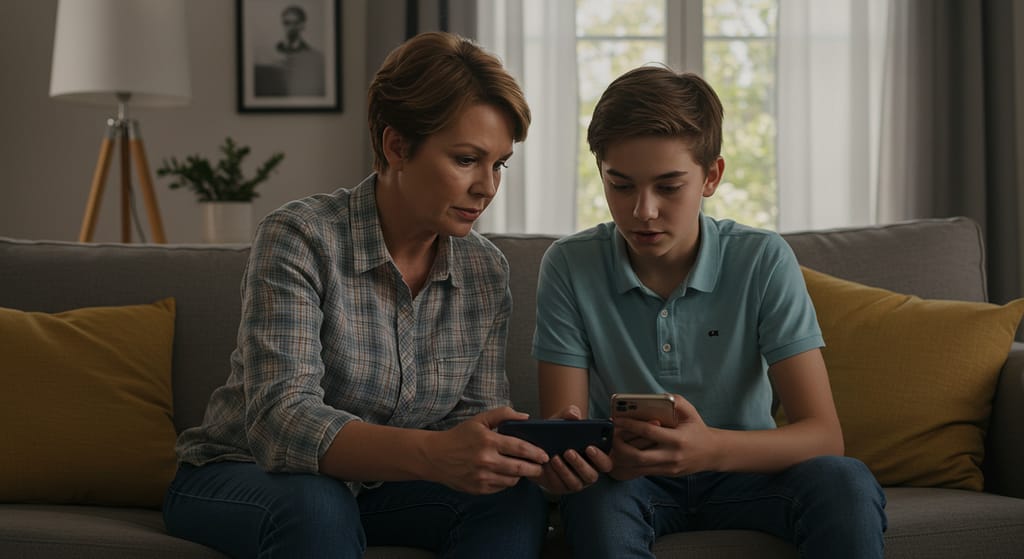Teenage boys social media is a powerful force shaping boys’ habits, self-perception, and relationships from early adolescence onward. Understanding that influence—and guiding it wisely—is vital for parents who wish to raise grounded, resilient young men. In this guide, we’ll explore what teenage boys are doing online, how social media impacts them both positively and negatively, and practical steps parents can take to foster healthy use habits.

How Teenage Boys Use Social Media
Teenage boys social media usage tends to skew toward humor, trends, gaming, and community engagement:
- Sharing memes, short videos, and funny content
- Following niche interests like sports, cars, fitness, and gaming
- Engaging with streamers and online personalities
- Spending time in gaming-centered social spaces like Discord
- Occasionally chatting or flirting with peers
This type of behavior underscores not just a desire to stay entertained, but to bond, explore identity, and belong.
The Influence of Social Media on Teenage Boys
Teenage boys social media can be a double-edged sword—here’s how:
Positive Influences
- Connection with peers who share interests
- Access to creative inspiration, humor, and educational content
(Pew Research)
(My Family Life)
Negative Impacts
- Distorted body image perceptions through filtered or idealized content
(PAYH) - Elevated anxiety, social comparison, or “Fear of Missing Out”
(Future Strong) - Exposure to cyberbullying, negative comments, or misinformation
(Verywell Family) - Mental health risks like sleep disruption and increased stress
(Rolling Out)
Expert Insights on Guiding Teenage Boys
Leading voices agree that guidance—not control—is key when navigating teenage boys social media.
- ConnectSafely emphasizes engaging with trust, modeling healthy habits, and avoiding micromanagement.
- HealthyChildren.org recommends building a family media plan and setting mutual rules.
- World Health Organization (WHO) urges age-appropriate, gender-sensitive digital literacy to build resilience and critical thinking.
- The Guardian highlights that parental controls alone aren’t enough; open communication and role modeling matter most.
How to Guide Teenage Boys Through Social Media
Establish Boundaries Early
Create a family media plan that includes screen-free times (e.g., mealtimes, pre-bedtime) and clear usage expectations.
Keep Dialogue Open & Non-Judgmental
Speak about their online world with curiosity, not suspicion. Ask which apps they enjoy and why.
(WHO Recommendations)
Model Balanced Digital Habits
If parents practice healthy tech behaviors, teenage boys are more likely to follow—especially when the rules apply to everyone.
(The Guardian)
Encourage Offline Interests
Help them pursue hobbies like sports, art, or volunteering to reduce dependence on social media for fulfillment.
(Liahona Academy)
Educate on Risks & Digital Footprint
Discuss cyberbullying, privacy, and how posts stay online forever. Teach them how to report or block harmful content.
(Verywell Family)
Build Resilience & Self-Worth
Focus on character, real-life achievements, and critical thinking—so social validation feels less necessary.
(Informed Families)
Seek External Support When Needed
Mental health professionals can help if social media starts to impact well-being. You don’t have to go it alone.
Summary Table
| Area | What to Do |
|---|---|
| Boundaries | Set family screen-time rules and tech-free zones |
| Communication | Ask questions, show interest, and listen without judgment |
| Modeling | Show healthy tech habits and enforce rules fairly |
| Resilience | Encourage offline passions and reinforce values |
| Safety | Teach about cyberbullying, privacy, and digital footprints |
| Support | Be open to therapy or expert advice when struggles arise |
Final Thoughts
Teenage boys social media isn’t just a phase—it’s a gateway to identity, connection, creativity, and challenges. As parents, your role isn’t to police it, but to guide with trust, modeling, and open dialogue. Show them that you understand, that you’re present, and that you’re there to support—not just restrict.
By combining boundaries, empathy, education, and real-world connection, you empower your son to navigate the digital world with confidence, awareness, and kindness.
